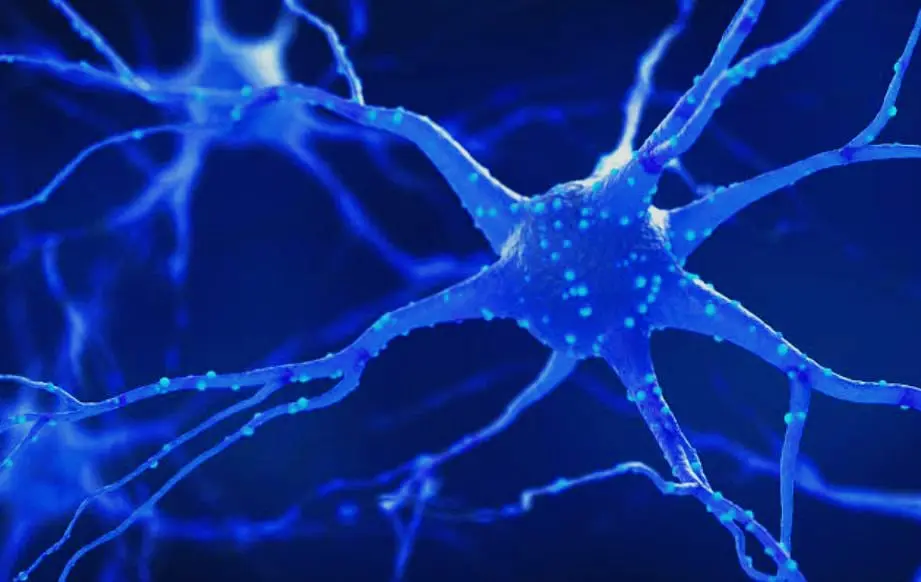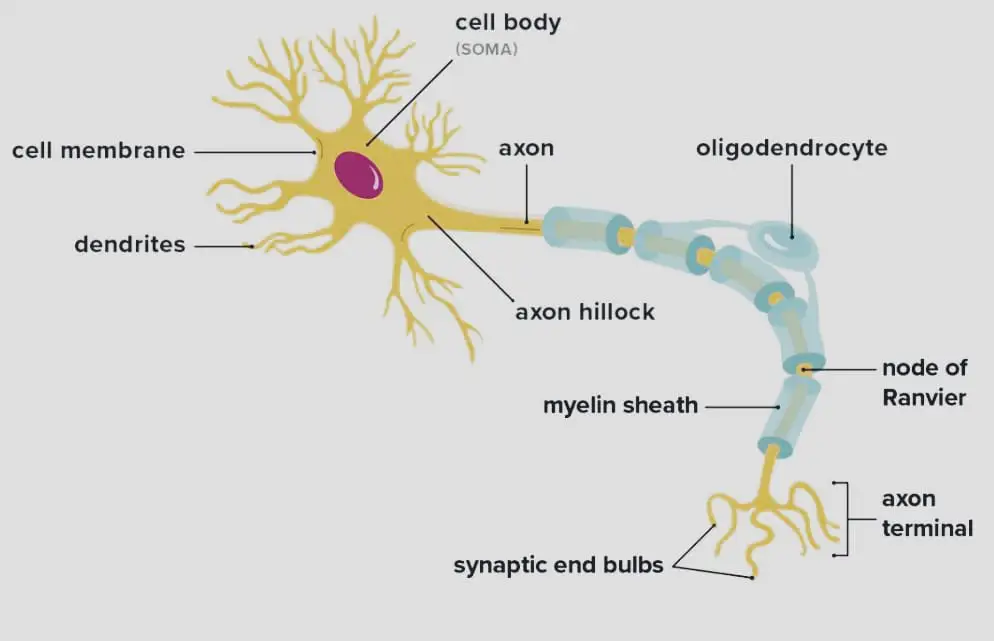The fundamental component of the nervous system is the neuron. Specific conductor cells receive and transmit the nerve impulse called the Electrochemical nerve. In a normal neuron, the long arms that carry impulses from one part of the body to another include a cell body.
Functions of Neurons in the Nervous System

The neuron is divided into three parts:
- Axon
- Dendrites
- Cell Body
Cell body of neuron
The cell body has a nucleus or control center like all other cells do.
Dendrites
Dendrites are a variety of dense branches. It’s a cable-like extensions that extend from the cell body. The sensory neuron is an exception, it only has one long dendrite. The dendrites present in motor neurons are numerous and dense. Dendrites transport the nerve impulse into the cell body.
Axon
An axon is a projection that extends from the cell body to another neuron or tissue. These axons are long and thin. Typically, each neuron has just one axon.
Myelin sheath
The Myelin Sheath or Schwann Cells cover the neuron. Many peripheral neurons have these white, segmented coverings around their axons and dendrites, except for the place of termination.
The nodes of Ranvier are the covering continuous along the axons or dendrites.
Schwann cells, which contain a nucleus, are surrounded by a layer known as the neurilemma. The neurilemma promotes nerve regeneration in damaged areas. Because the brain and spinal cord lack a neurilemma, their nerves cannot repair themselves after being injured.

Types of neuron
According to their form and function, neurons in the body can be classified as multipolar, bipolar, or unipolar depending on their structural makeup:

- Multipolar Neurons: One axon and numerous dendrites and typically found in the brain and spinal cord.
- Bipolar neurons have one axon and one dendrite, found in the olfactory (smell) region, the inner ear, and the retina of the eye.
- Unipolar Neurons: One process emerges from the cell body, and the process splits into two parts, one of which serves as an axon and the other as a dendrite.
For Further Reading:

